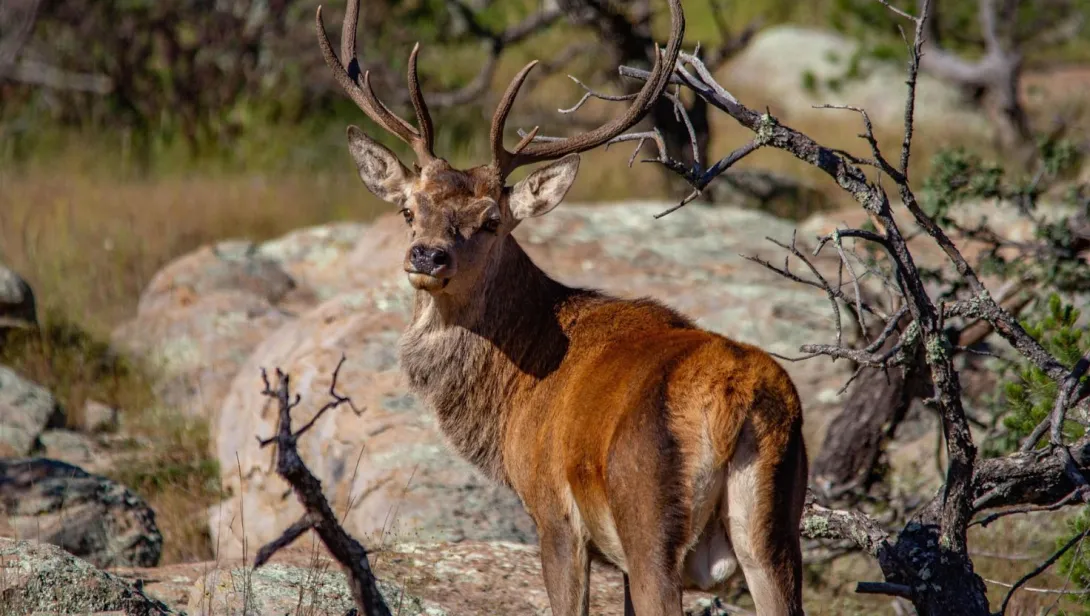Skip to main content
General Information
- The Red Deer (Cervus elaphus) is one of the largest deer species in the world.
- It is native to Europe, North Africa, and parts of Asia but has been introduced to other regions.
- Red deer are known for their majestic antlers, which are found only in males.
- They are herbivores, primarily feeding on grass, leaves, and shrubs.
- Red deer play an important role in forest ecosystems by helping with seed dispersal and vegetation control.
Physical Characteristics
- Adult males, called stags, can weigh between 160 to 240 kg (350 to 530 lbs).
- Females, known as hinds, are smaller, weighing around 120 to 170 kg (260 to 375 lbs).
- Red deer stand at about 1.2 to 1.5 meters (4 to 5 feet) at the shoulder.
- Their fur varies from reddish-brown in summer to a darker brown or grayish color in winter.
- Stags grow large, branching antlers that can reach up to 1 meter (3.3 feet) in length.
- They have a distinctive white rump patch that helps with identification.
Habitat and Adaptation
- Red deer prefer woodlands, grasslands, and mountainous regions.
- They are highly adaptable and can survive in a range of climates.
- They migrate seasonally, moving to higher elevations in summer and lower areas in winter.
- Their thick coat provides insulation against cold weather.
Diet and Feeding Behavior
- Red deer are herbivores and primarily eat grass, leaves, twigs, bark, and fruits.
- They graze in open fields and woodlands, mostly during dawn and dusk.
- In winter, they rely on tree bark and shrubs when grass is scarce.
- They use their strong molars to chew tough plant material.
Social Behavior
- Red deer live in groups called herds, with females and young forming separate groups from males.
- Stags live alone or in small bachelor groups outside the breeding season.
- They use vocalizations like roars and grunts to communicate.
- During the mating season, males become territorial and engage in fights.
Reproduction and Lifespan
- Breeding season, or rutting season, occurs in the autumn.
- Dominant stags compete for females by roaring, chasing, and fighting with their antlers.
- Females give birth to a single fawn after a gestation period of about 8 months.
- Fawns are born with white spots on their coat for camouflage.
- Red deer can live up to 15 years in the wild and over 20 years in captivity.
Threats and Conservation
- Red deer populations are affected by habitat loss, poaching, and climate change.
- They are sometimes hunted for their meat, antlers, and hides.
- In some regions, they are considered a protected species to maintain healthy populations.
- Conservation efforts focus on habitat restoration and sustainable hunting practices.
Interesting Facts
- Their loud roaring during the rut can be heard from kilometers away.
- Red deer shed their antlers every year, growing new ones in spring.
- They are excellent swimmers and can cross rivers and lakes with ease.
- Red deer have been depicted in ancient cave paintings and have been important in folklore.
- Their keen sense of smell, hearing, and vision helps them detect predators.
